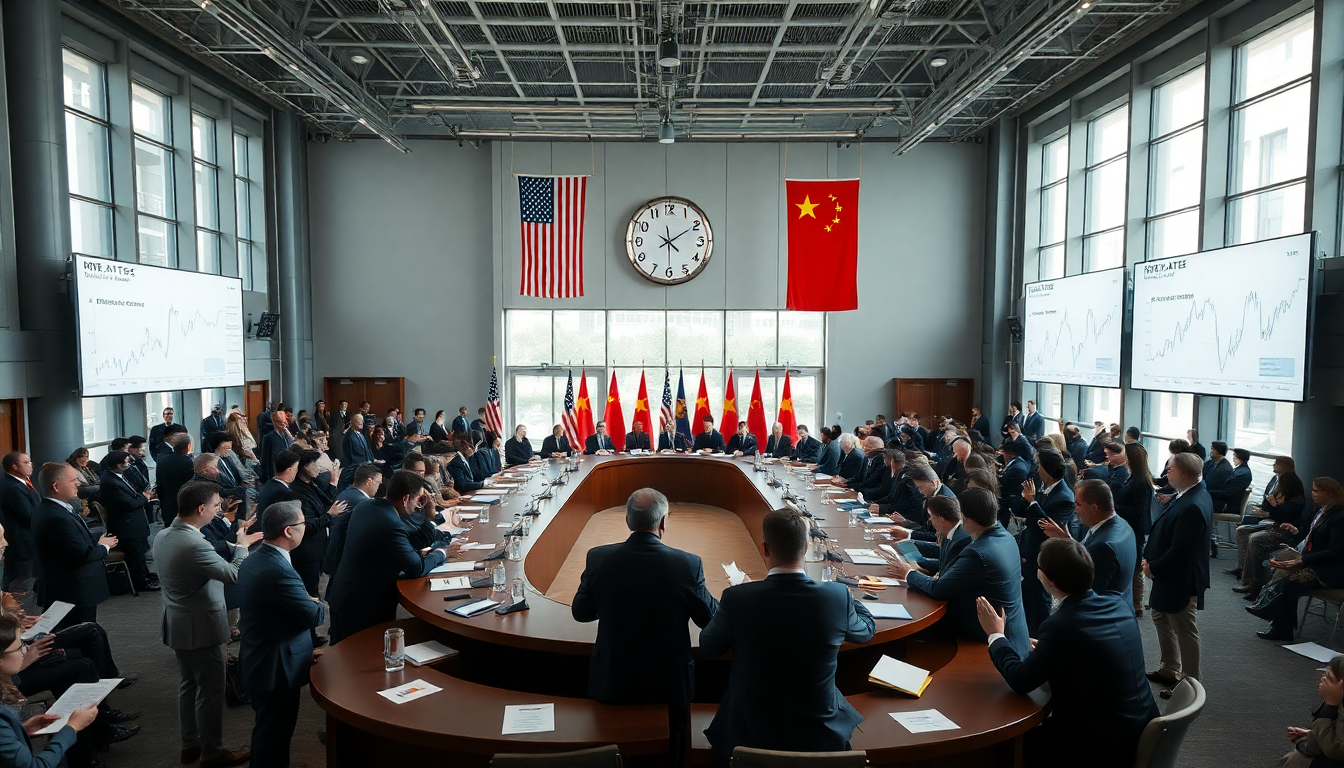Table of Contents
The trade relationship between the United States and China, two of the world’s biggest economies, is anything but straightforward. Ever since President Donald Trump took office, the vibe of this relationship has swung between tough talk and hopeful promises of cooperation. Recently, Trump sounded optimistic about the future, claiming that the U.S. and China are meant to have a “great relationship,” even as challenging trade negotiations and geopolitical tensions loom on the horizon. But what does this really mean for both countries?
The Current State of Trade Relations
During a recent press briefing, Trump talked about the “incredible cards” the U.S. holds in these negotiations. This phrase is more than just a catchy metaphor; it reflects the economic and political leverage that the U.S. believes it has over China. But what exactly are these “cards”? Are they economic sanctions, trade tariffs, or something else entirely? One thing’s for sure: Trump is determined to keep a strategic advantage.
These negotiations are happening against a backdrop of tariffs and temporary trade ceasefires. Just a few weeks ago, on August 12, Washington and Beijing agreed to extend their pause in trade hostilities for another 90 days. This extension gives negotiators a bit more breathing room to iron out a deal. However, it comes amidst rising tariffs on a wide array of Chinese imports from the U.S., which have soared as high as 30%. In retaliation, China has imposed its own tariffs on American goods. It’s a classic game of tit-for-tat.
It’s important to realize that these economic shifts are deeply intertwined with geopolitical factors, including China’s ties with countries like Iran and Russia. The U.S. is keeping a close eye on China’s oil imports from these nations, viewing them as potential threats to global stability and American interests. How will this influence the trade talks moving forward?
Key Issues in the Negotiations
One of the major sticking points in recent negotiations is China’s support for oil imports from sanctioned countries like Iran and Russia. U.S. Treasury Secretary Scott Bessent has pointed out that these relationships could derail progress in trade talks. The U.S. has long accused Iran and Russia of using oil money to fund activities that destabilize the region, and China’s role as a leading importer of Iranian oil complicates matters even further.
Additionally, Bessent emphasized the urgent need for China to rethink its economic practices, especially given its status as a manufacturing giant. The U.S. aims to rein in China’s massive export economy while encouraging it to step up as a responsible global trade partner. This shift is crucial for balancing trade relations and addressing ongoing concerns about trade imbalances. But how can both sides find common ground?
Future Outlook and Implications
The future of U.S.-China trade relations is clouded with uncertainty. Trump’s hints about possibly visiting China to meet with President Xi Jinping indicate a willingness to open direct lines of communication. Yet, the complexities of the situation are significant. The risk of escalating tensions is real, especially if negotiations fall short of satisfying both parties.
As the months roll on, keeping an eye on trade developments will be essential. The outcomes of these negotiations will not just affect the two countries involved; they could ripple through global markets and economic stability. Investors and stakeholders should stay alert, as these discussions could redefine trade norms and strategies worldwide.
Looking ahead, it’s crucial to understand that the interplay between trade policies, geopolitical strategies, and economic indicators will shape the future of international commerce. The stakes have never been higher, and both nations must tread carefully to avoid disruptions that could hinder global economic growth. What do you think will happen next in this high-stakes game?


